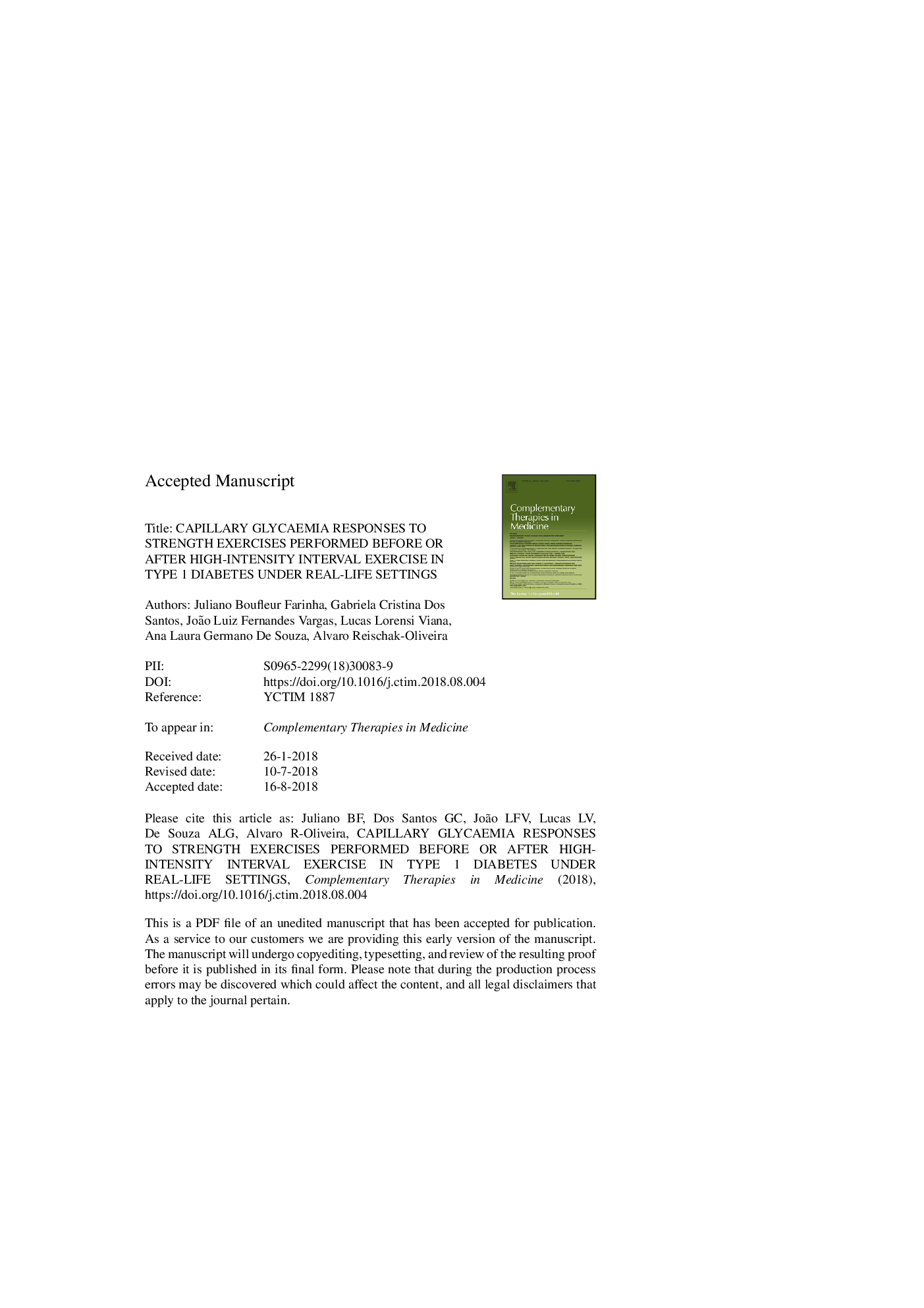| Article ID | Journal | Published Year | Pages | File Type |
|---|---|---|---|---|
| 9955096 | Complementary Therapies in Medicine | 2018 | 17 Pages |
Abstract
This study investigated the influence of performing strength exercises before or after high-intensity interval exercise on glycaemia during and postexercise in T1DM patients. Nine physically active adults with T1DM executed 30âmin of strength exercises (SE) (3 sets at 10 RM) before 30âmin of high-intensity interval exercise (HIIE) (10âÃâ60-s bout at â¼90% HRmax interspersed with 60âs recovery) (SEâ+âHIIE) or performed the reverse order (HIIEâ+âSE) or rested in this period. Capillary glucose levels were measured each 15âmin during and 60âmin postexercise recovery. Significant lower glucose levels were observed in SEâ+âHIIE at 60, 75 and 90âmin, in comparison with REST. HIIEâ+âSE lowered glycaemia at 30, 45 and 60âmin compared with baseline concentrations, while SEâ+âHIIE postponed this glucose decayment to 60âmin, when compared with baseline levels. An increased glycaemia at 105âmin compared with end-exercise levels were also observed in HIIEâ+âSE. Carbohydrates ingested during exercise to correct hypoglycemia, insulin dosage at same day before and after protocols, and nocturnal hypoglycemia episodes were similar among the three conditions. It is concluded that the performance of HIIE before SE decreases glycaemia already at the end of first exercise modality, while the reverse order postpones it to the end of second exercise, although HIIEâ+âSE improves glycemic stability throughout recovery. T1DM patients who tend to develop exercise-associated hypoglycemia may perform strength exercises before high-intensity interval exercise in a single session.
Keywords
Related Topics
Health Sciences
Medicine and Dentistry
Complementary and Alternative Medicine
Authors
Juliano Boufleur Farinha, Gabriela Cristina Dos Santos, João Luiz Fernandes Vargas, Lucas Lorensi Viana, Ana Laura Germano De Souza, Alvaro Reischak-Oliveira,
